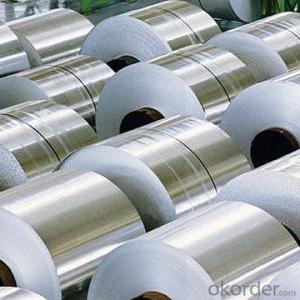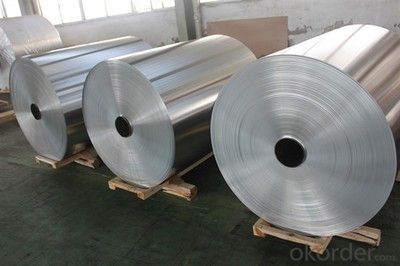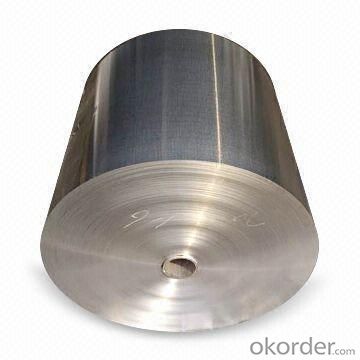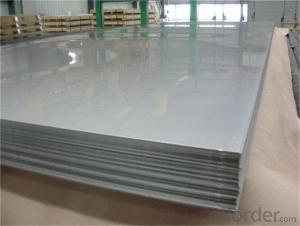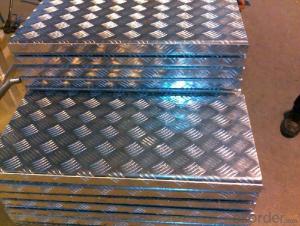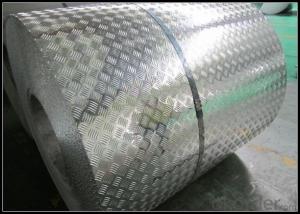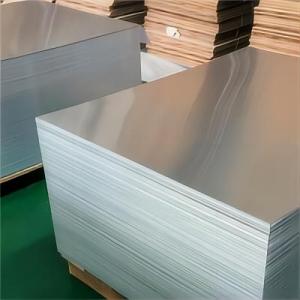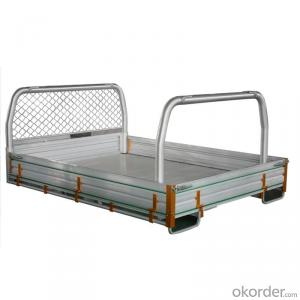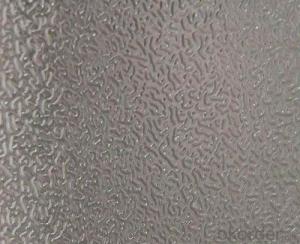Outdoor Aluminum Roof Sheets - Embossed Aluminum Sheet for Roofing Making
- Loading Port:
- Shanghai
- Payment Terms:
- TT OR LC
- Min Order Qty:
- 5 m.t.
- Supply Capability:
- 2000 m.t./month
OKorder Service Pledge
OKorder Financial Service
You Might Also Like
Specification
Structure of Aluminium Sheet Embossed for Roofing Making Description:
Coated aluminum coil/sheet are of a wide range of colors, which gives wonderful appearance no matter in residential and commercial constructions of great exhibition centers.
The coated aluminum coil/sheet have been widely used in the fields of construction and decoration( garage doors, ceiling etc.), electronic appliances, lighting decoration, air-condition air pipes, sandwich panels and drainages etc.
Main Features of the Aluminium Sheet Embossed for Roofing Making:
1) High flexibility
2) Impact resistance
3) Excellent weather-proof durability
4) Anti-ultraviolet
5) High erosion resist
Images of the Aluminium Sheet Embossed for Roofing Making:
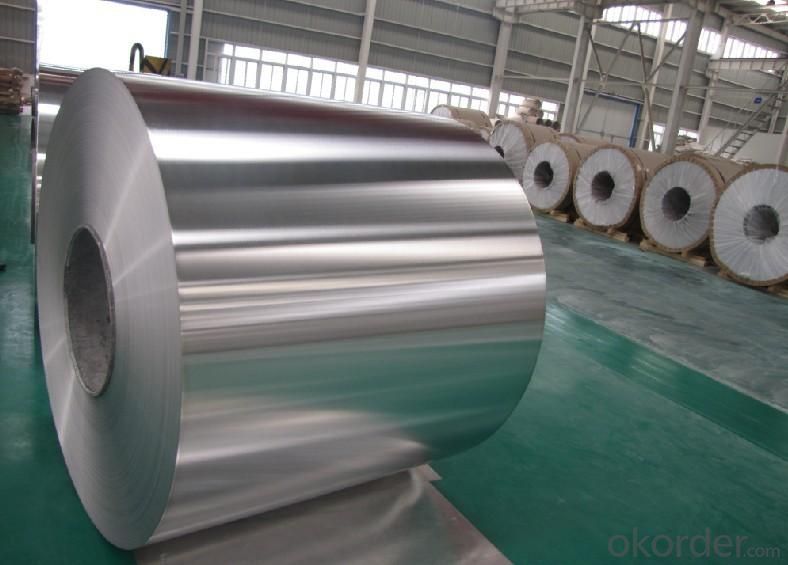
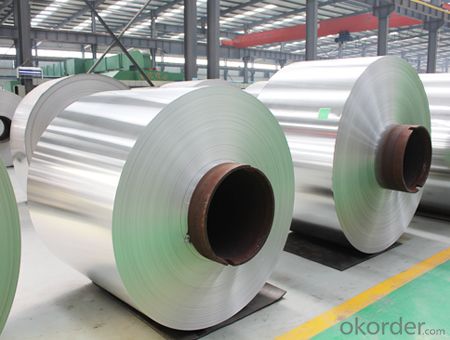
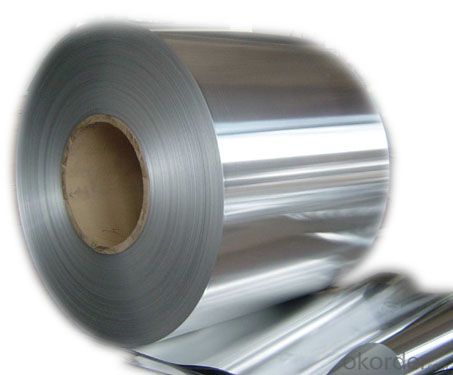
Aluminium Sheet Embossed for Roofing Making Specification:
Alloy | A1100,A3003,A1050,A8011 etc |
Temper | H16,H18,H24 |
Thickness | From 0.024mm to 1.2mm |
Width | Standard width:1240mm |
Special width:1300mm,1520mm,1570mm,1595mm | |
Diameter | Standard dia:1200mm |
Interior dia:150mm,405mm,505mm | |
Weight | 2.5 T/coil,3.0 T/coil |
Coating | PE, PVDF, AC |
Surface | Embossed, mill finish, coated |
Color | AS to code RAL |
Gloss | 10-90%(EN ISO-2813:1994) |
Coating Thickness | PE: more than 18 micron |
PVDF: more than 25 micron | |
Coating Hardness (pencil resistance) | More than 2h |
Coating adhesion | 5J(EN ISO-2409:1994) |
Impact Resistance | No peeling or cracking(50 kg/cm,ASTMD-2794:1993) |
Flexibility (T-bend) | 2T |
MEK resistance | More than 100 |
FAQ:
a.What is monthly capacity
---CNBM is one stated own company and our monthly capacity is about 2000tons.
b. Now which countries do you export your goods?
---Now we export to South East Asia,Africa, North America,South America ect.
- Q: What does exterior wall imitate aluminium paint have? Imitate aluminium plate paint is fluorocarbon paint?
- The exterior walls are painted with aluminium and plastic panels, and only fluorocarbon metal paint is used. The fluorine content determines the service life;The construction technology of fluorocarbon metal paint is relatively complex, and the price is more expensive, generally including the construction is roughly equivalent to more than half the price point to use aluminum plate;
- Q: How do you prevent galvanic corrosion when using aluminum sheets with concrete?
- To prevent galvanic corrosion when utilizing aluminum sheets in conjunction with concrete, there are several precautionary measures that can be employed: 1. Barrier Coating: Apply a protective barrier coating or paint onto the aluminum sheets to create a separation between them and the concrete. This coating functions as a safeguarding layer, hindering direct contact between the aluminum and the concrete, thereby diminishing the likelihood of galvanic corrosion. 2. Insulation: Introduce an insulating material between the aluminum sheets and the concrete. This material can take the form of a non-conductive plastic or rubber sheet that effectively isolates the aluminum from the concrete, minimizing the potential risk of galvanic corrosion. 3. Surface Treatment: Administer a corrosion-resistant treatment to the aluminum sheets. Anodizing is a prevalent surface treatment technique that generates a protective oxide layer on the aluminum surface, augmenting its resistance to corrosion when in contact with concrete. 4. Utilize Dissimilar Metals: Refrain from employing dissimilar metals in conjunction with aluminum sheets and concrete. When dissimilar metals, such as steel or iron, come into contact with aluminum in the presence of moisture, the likelihood of galvanic corrosion increases. Hence, it is advisable to employ aluminum fasteners or supports when working with aluminum sheets and concrete. 5. Adequate Drainage: Ensure proper drainage in areas where aluminum sheets are in contact with concrete. Accumulation of water or moisture can expedite galvanic corrosion. By ensuring sufficient drainage, the amount of moisture that comes into contact with the aluminum can be minimized, thereby reducing the risk of corrosion. 6. Routine Maintenance: Regularly inspect and maintain the aluminum sheets and their protective measures. If any damage or deterioration is detected, promptly repair or replace the barrier coatings, insulation, or surface treatments to ensure continuous protection against galvanic corrosion. By implementing these preventative measures, the risk of galvanic corrosion when employing aluminum sheets with concrete can be significantly mitigated, thereby prolonging the longevity and integrity of both the aluminum and the concrete structures.
- Q: What are the primary components that make up aluminum sheets?
- <p>Aluminum sheets are primarily composed of aluminum, which is a lightweight and malleable metal. They are made from pure aluminum or aluminum alloys, which may include small percentages of other elements to enhance specific properties such as strength, corrosion resistance, or workability. Common alloying elements include copper, magnesium, manganese, silicon, and zinc. The exact composition varies depending on the specific grade of aluminum and its intended use. Pure aluminum is soft and not commonly used for sheets; instead, alloys are preferred for their improved strength and durability.</p>
- Q: What are the standards and certifications available for aluminum sheets?
- There are several standards and certifications available for aluminum sheets, ensuring their quality and compliance with industry requirements. Some of the commonly recognized ones include: 1. ASTM International Standards: The American Society for Testing and Materials (ASTM) has developed a range of standards specifically for aluminum and aluminum alloys. These standards cover various aspects such as chemical composition, mechanical properties, and dimensional tolerances, ensuring consistent quality across different aluminum sheet products. 2. ISO 9001: The ISO 9001 certification is a globally recognized standard for quality management systems. Aluminum sheet manufacturers that are ISO 9001 certified have demonstrated their commitment to meeting customer requirements, continuous improvement, and adherence to strict quality control processes. 3. ASME Standards: The American Society of Mechanical Engineers (ASME) has established specific standards for aluminum sheet materials used in pressure vessels, piping, and other applications. These standards ensure the safety and reliability of aluminum sheets in critical applications. 4. MIL-Specifications: The United States Department of Defense (DoD) has developed military specifications (MIL-Specs) for various materials, including aluminum sheets. These specifications define the requirements for military-grade aluminum sheets, ensuring their suitability for specific defense applications. 5. EN Standards: The European Committee for Standardization (CEN) has developed a series of European Norm (EN) standards for aluminum and aluminum alloys. These standards cover various aspects such as chemical composition, mechanical properties, and surface finishes, ensuring compatibility and consistency across the European market. 6. RoHS Compliance: Restriction of Hazardous Substances (RoHS) compliance is crucial for aluminum sheets used in electrical and electronic equipment. This certification ensures that the aluminum sheets do not contain hazardous substances such as lead, mercury, cadmium, and certain flame retardants, thus guaranteeing their environmental safety. It is important for manufacturers and suppliers of aluminum sheets to comply with these standards and certifications to ensure the highest quality, safety, and suitability of their products for specific applications.
- Q: Could two pieces of aluminum sheets be welded together?
- youcan use aluminium soldering,what do you want to weld?
- Q: 3003H24 alloy aluminum plate refers to what kind of aluminum plate?
- Attached: O status: fully annealed to obtain the lowest strength of the processing products. 8 state: hard working state (9)
- Q: How do aluminum sheets perform in extreme weather conditions?
- Aluminum sheets are renowned for their exceptional performance in extreme weather conditions, as they possess inherent properties that render them highly resistant to corrosion and capable of enduring harsh environmental elements like rain, snow, and extreme temperature fluctuations. When confronted with hot weather, aluminum sheets possess the ability to reflect sunlight and dispel heat, thereby averting any warping or deformation. This characteristic renders them suitable for utilization in regions characterized by high temperatures or direct exposure to sunlight. Similarly, in cold weather, aluminum sheets retain their strength and do not become brittle, making them dependable in freezing temperatures or regions prone to heavy snowfall. With a low coefficient of thermal expansion, they can withstand contraction and expansion without any detrimental effects such as cracking or damage. Moreover, aluminum sheets exhibit excellent resistance to moisture, which safeguards them against rusting or corroding when exposed to rain or high levels of humidity. This quality makes them an ideal choice for employment in coastal areas or regions with substantial rainfall. Additionally, aluminum sheets possess the advantage of being lightweight yet durable, enabling them to withstand high winds and severe storms without compromising their structural integrity. This quality positions them as the preferred option for applications such as roofing, siding, and outdoor signage in areas susceptible to hurricanes or strong winds. All in all, aluminum sheets display remarkable performance in extreme weather conditions, which establishes them as a reliable and versatile material for various outdoor applications.
- Q: Are aluminum sheets suitable for automotive body panels?
- There are several reasons why aluminum sheets are suitable for automotive body panels. Firstly, aluminum is a lightweight material that improves fuel efficiency and overall vehicle performance. This leads to better acceleration, handling, and braking. Moreover, the use of aluminum body panels reduces the overall weight of the vehicle, which is especially important for electric cars as it extends their range. Secondly, aluminum has excellent corrosion resistance. It naturally forms a protective oxide layer on its surface, preventing rusting and deterioration caused by different weather conditions. This durability ensures that automotive body panels maintain their structural integrity over time. Furthermore, aluminum is highly malleable and can be easily shaped into complex forms using various manufacturing techniques such as stamping, extrusion, and hydroforming. This allows for greater design flexibility, enabling automakers to create sleek and aerodynamic body styles. Additionally, aluminum can be easily joined through welding or adhesive bonding, simplifying the assembly and repair of automotive body panels. Moreover, aluminum is a sustainable material as it is highly recyclable. Recycling aluminum requires significantly less energy compared to primary production, resulting in reduced greenhouse gas emissions. This aligns with the growing emphasis on sustainability and environmental consciousness in the automotive industry. In conclusion, the use of aluminum sheets in automotive body panels offers numerous advantages such as improved fuel efficiency, corrosion resistance, design flexibility, and sustainability. These factors make aluminum a suitable and increasingly popular choice for automakers looking to enhance the performance, durability, and environmental friendliness of their vehicles.
- Q: How do aluminum sheets perform in terms of fatigue resistance?
- Aluminum sheets are known for their excellent fatigue resistance. This means they are capable of withstanding repeated cycles of stress and strain without experiencing significant deterioration in their mechanical properties. Fatigue resistance in aluminum sheets is primarily attributed to their microstructure, which consists of small and uniformly distributed grains. This microstructure helps in distributing the applied stress more evenly throughout the material, preventing the formation and propagation of cracks. Additionally, aluminum sheets can be further enhanced for fatigue resistance through various processing techniques such as heat treatment, alloying, and surface treatments. These techniques can refine the microstructure, increase the strength, and improve the overall fatigue performance of the material. Moreover, aluminum has a relatively low density compared to other metals, which contributes to its superior fatigue resistance. The low density allows for better energy absorption during cyclic loading, reducing the likelihood of crack initiation and propagation. However, it is important to note that fatigue resistance can vary depending on the specific alloy, temper, and thickness of the aluminum sheet. Different aluminum alloys have different mechanical properties and fatigue limits, so it is crucial to select the appropriate alloy and temper based on the specific application requirements. Overall, aluminum sheets are well-regarded for their excellent fatigue resistance, making them a popular choice in industries requiring materials that can withstand cyclic loading and extended service life.
- Q: What are the applications of aluminum sheet?
- Aluminum sheets have a wide range of applications due to their unique properties and versatility. Some of the common applications of aluminum sheets include: 1. Construction: Aluminum sheets are widely used in the construction industry for roofing, siding, and cladding purposes. Their lightweight nature makes them easy to handle and install, while their corrosion resistance ensures long-lasting durability. 2. Transportation: Aluminum sheets are extensively used in the automotive industry for manufacturing vehicle bodies, panels, and structural components. Their high strength-to-weight ratio helps reduce the overall weight of vehicles, increasing fuel efficiency and improving performance. 3. Packaging: Aluminum sheets are commonly used in the packaging industry for manufacturing cans, foils, and containers. Aluminum foils are used for food packaging, as they provide a barrier against moisture, light, and oxygen, ensuring the freshness and safety of the packaged products. 4. Electrical: Aluminum sheets are used in the electrical industry for manufacturing power transmission lines, busbars, and electrical enclosures. Their excellent electrical conductivity helps in the efficient transmission of electricity, while their corrosion resistance ensures longevity in outdoor applications. 5. Marine: Aluminum sheets are widely used in the marine industry for manufacturing boat hulls, decks, and superstructures. Their resistance to corrosion from saltwater makes them ideal for marine applications, while their lightweight nature helps reduce the overall weight of the vessel. 6. Aerospace: Aluminum sheets are extensively used in the aerospace industry for manufacturing aircraft and spacecraft components. Their high strength-to-weight ratio and excellent thermal conductivity make them suitable for applications where weight reduction and heat dissipation are critical. 7. Heat exchangers: Aluminum sheets are used in the manufacturing of heat exchangers, such as radiators and condensers. Their high thermal conductivity allows for efficient heat transfer, making them ideal for applications where heat exchange is required. 8. Decorative: Aluminum sheets are commonly used in interior design and architectural applications for decorative purposes. They can be easily shaped, bent, and formed into various designs, adding a modern and aesthetic appeal to buildings and interiors. Overall, aluminum sheets find applications in various industries due to their lightweight nature, corrosion resistance, high strength-to-weight ratio, and excellent thermal conductivity.
Send your message to us
Outdoor Aluminum Roof Sheets - Embossed Aluminum Sheet for Roofing Making
- Loading Port:
- Shanghai
- Payment Terms:
- TT OR LC
- Min Order Qty:
- 5 m.t.
- Supply Capability:
- 2000 m.t./month
OKorder Service Pledge
OKorder Financial Service
Similar products
Hot products
Hot Searches
Related keywords
